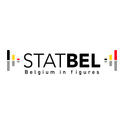In short
Be-MOMO in nursing homes (NH) concerns the monitoring of all-cause mortality among residents of nursing homes in Belgium, at both national and regional level. Carried out on a weekly basis, it enables unusual mortality among residents of NH and the rest of the population to be detected and quantified in near-real time, i.e. excess mortality that may result from epidemics or extreme weather or environmental conditions.
Project description
Be-MOMO in NH monitors all-cause mortality among residents of NH in Belgium.
In 2020, the COVID-19 pandemic highlighted the major vulnerabilities of residential institutions, particularly NH and care homes. The epidemiological monitoring of COVID-19 mortality revealed that residents of NH accounted for two-thirds of COVID-19-related deaths in the first wave.
Their advanced age, frailty and co-morbidities make these residents particularly vulnerable to respiratory infections. What’s more, living at such close quarters increases the risk of bacteria and viruses being transmitted within these institutions. Our population is also aging and will have to face up to a number of public health challenges, including the consequences of climate change, with an increase in heatwaves.
The collaboration between Sciensano’s Be-MOMO team and Statbel during the COVID-19 pandemic gave rise to the idea of Be-MOMO in NH. Every week, Statbel identifies residents of NH in the all-cause mortality data and sends the necessary data to Sciensano.
The Be-MOMO model
The Be-MOMO statistical model, which was developed from 2004 onwards, has been applied to mortality data among residents of NH. As part of the syndromic surveillance concept, Belgian Mortality Monitoring (Be-MOMO) can detect and quantify in near-real time the excess mortality that can result from epidemics such as influenza, or from extreme meteorological or environmental conditions such as cold spells or heatwaves, ozone or fine-particle peaks, and so on.
Early warning and excess mortality
Every week, Sciensano’s Infectious Disease Epidemiology Department analyzes the mortality data among residents of NH provided by Statbel. The mortality monitoring model is designed as a tool for the rapid detection and quantification of statistically significant excess mortality. We identify excess mortality by comparing the number of deaths observed with the number of deaths expected based on mortality over the last 5 years. Excess mortality is calculated by age group, gender and region. Be-MOMO sends alert reports to the authorities when the situation so requires.
For more information, follow Be-MOMO on Epistat or the Sciensano website.
For a more detailed overview of this monitoring system, see our protocol (FR or NL).
Results
The results are reported in the weekly bulletin on acute respiratory infections issued by Sciensano.
Sciensano's project investigator(s):
Service(s) working on this project
Partners






